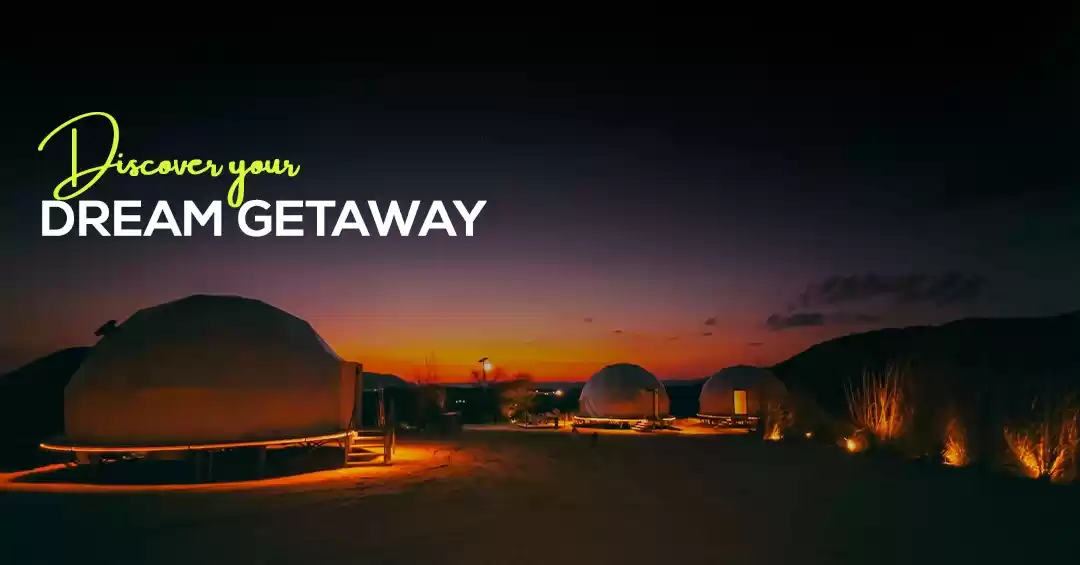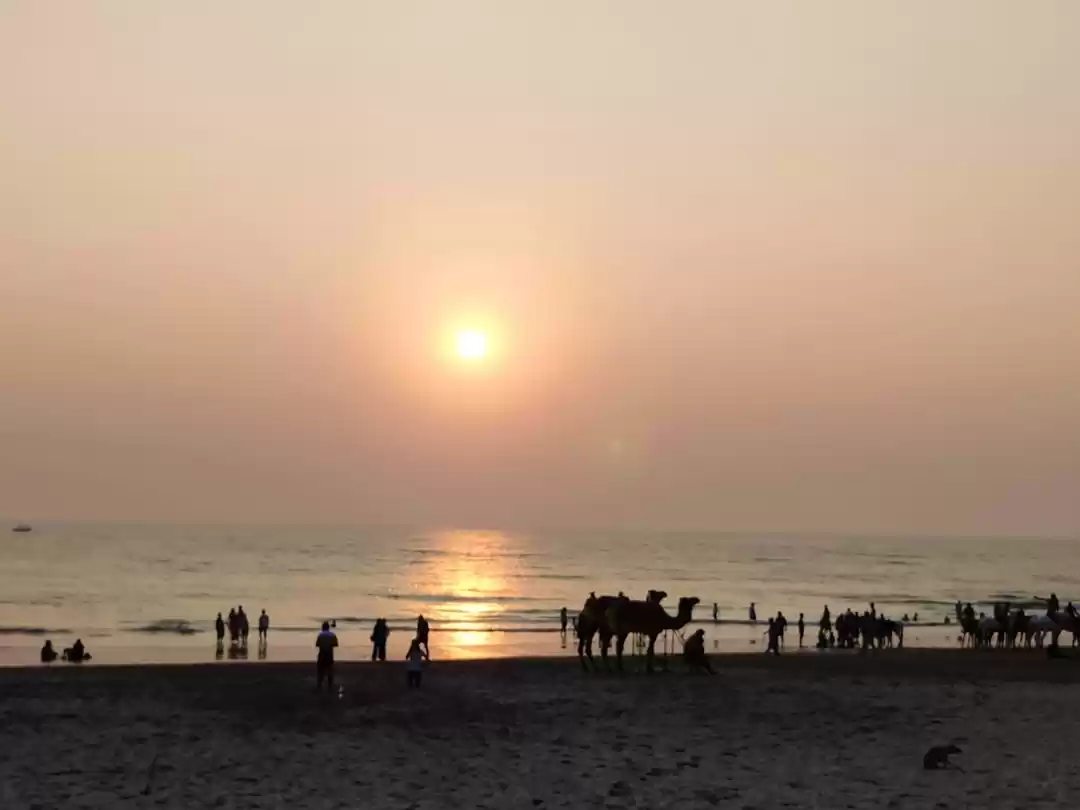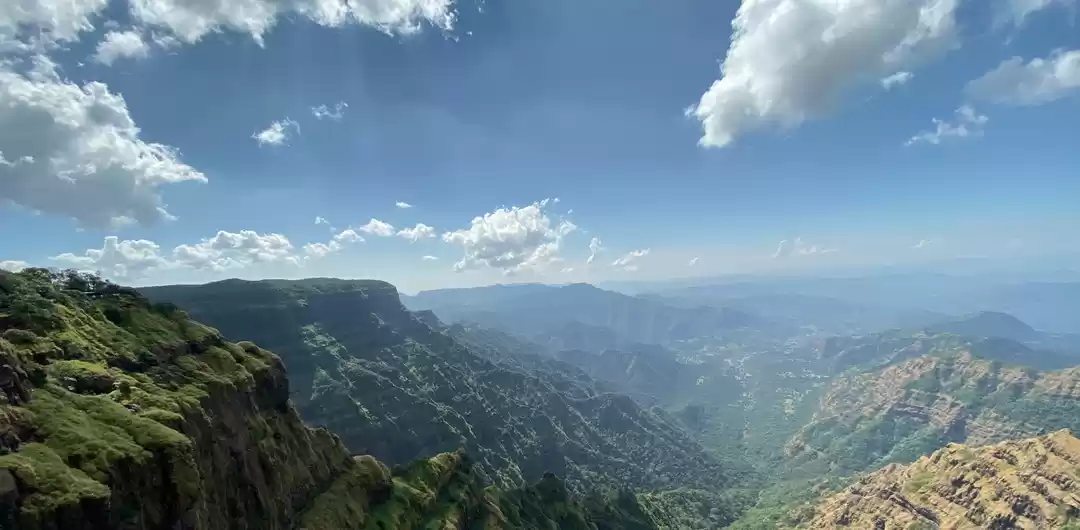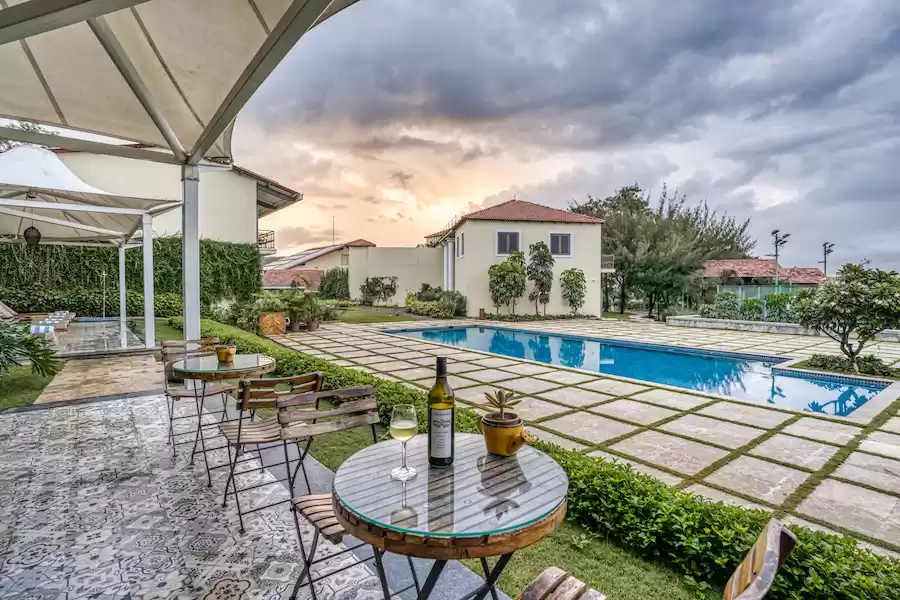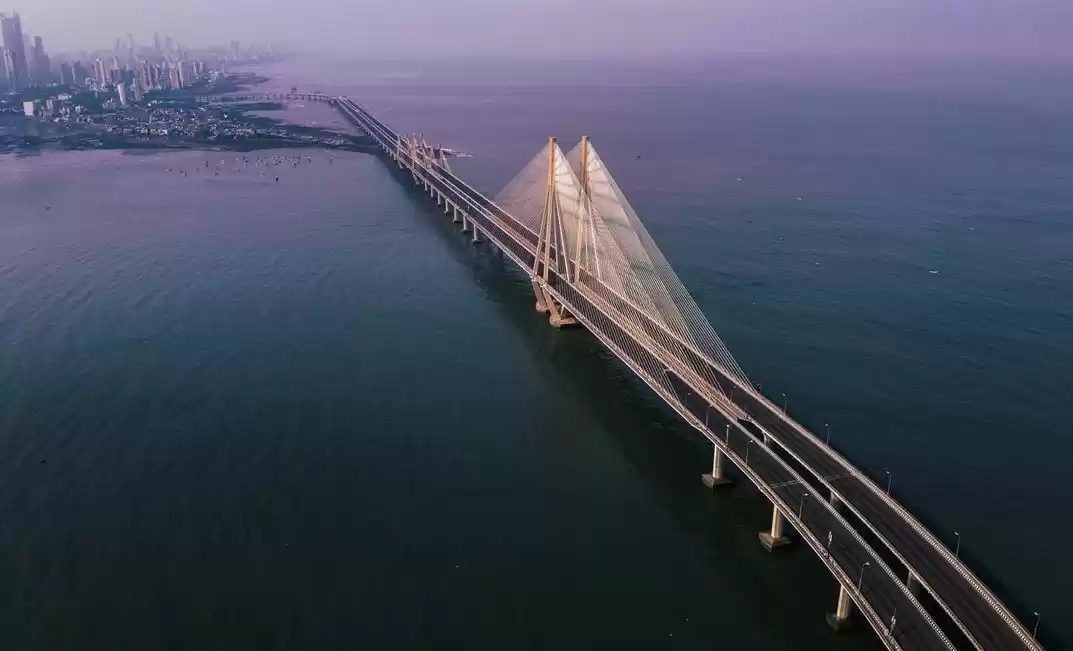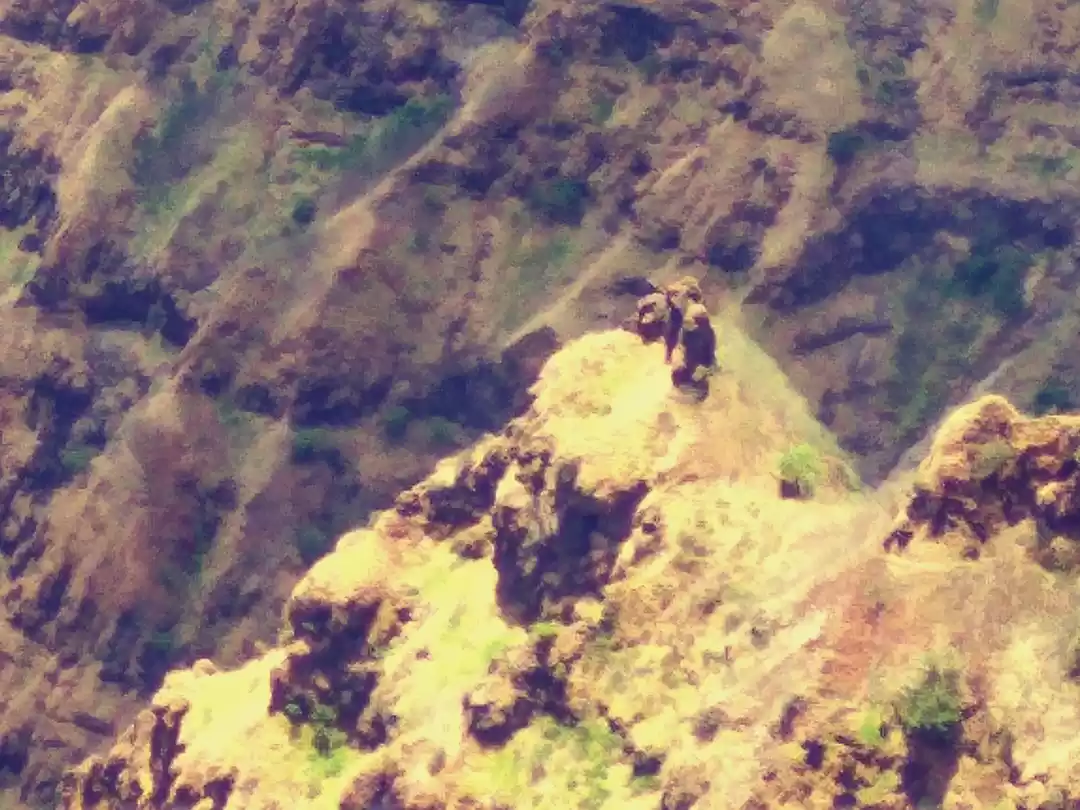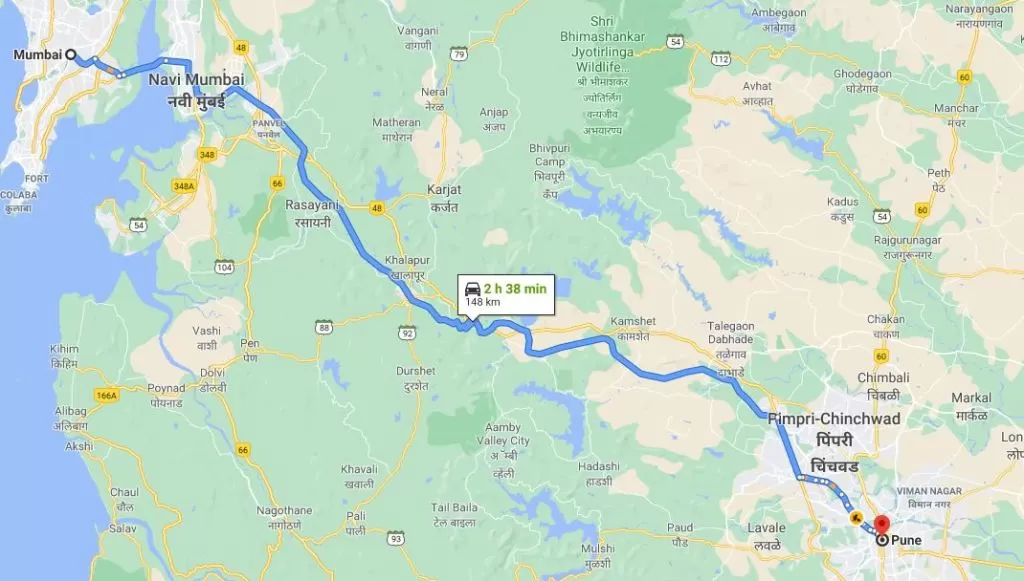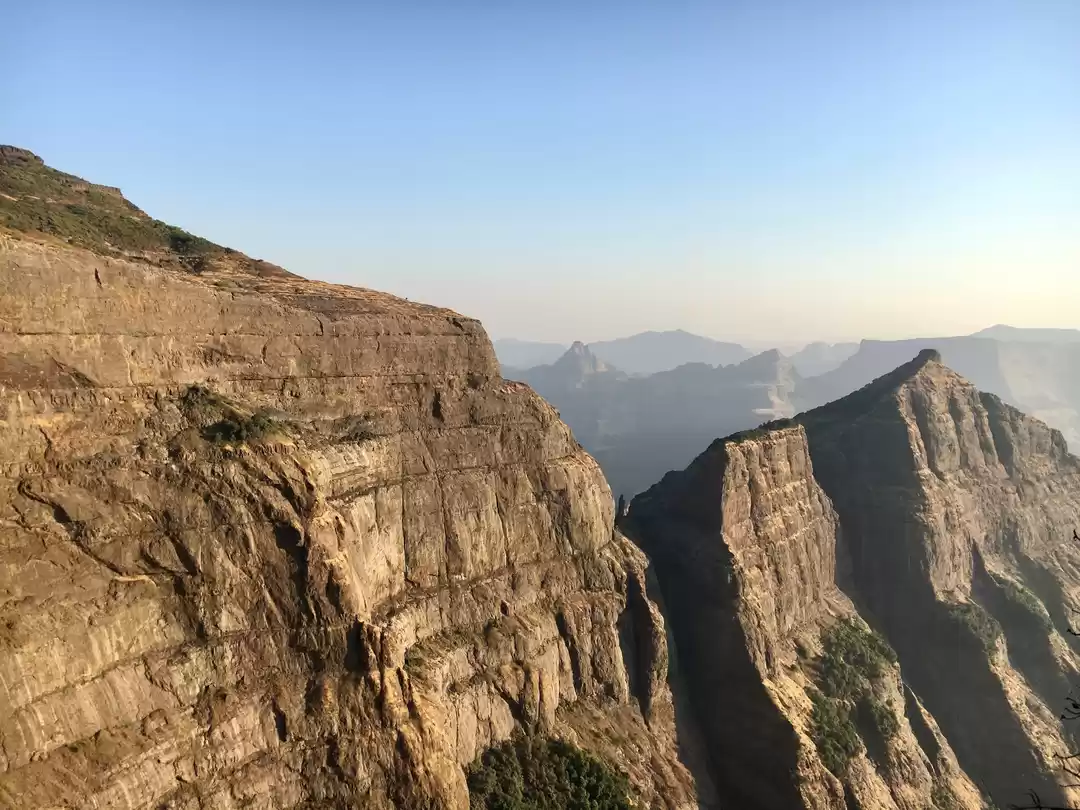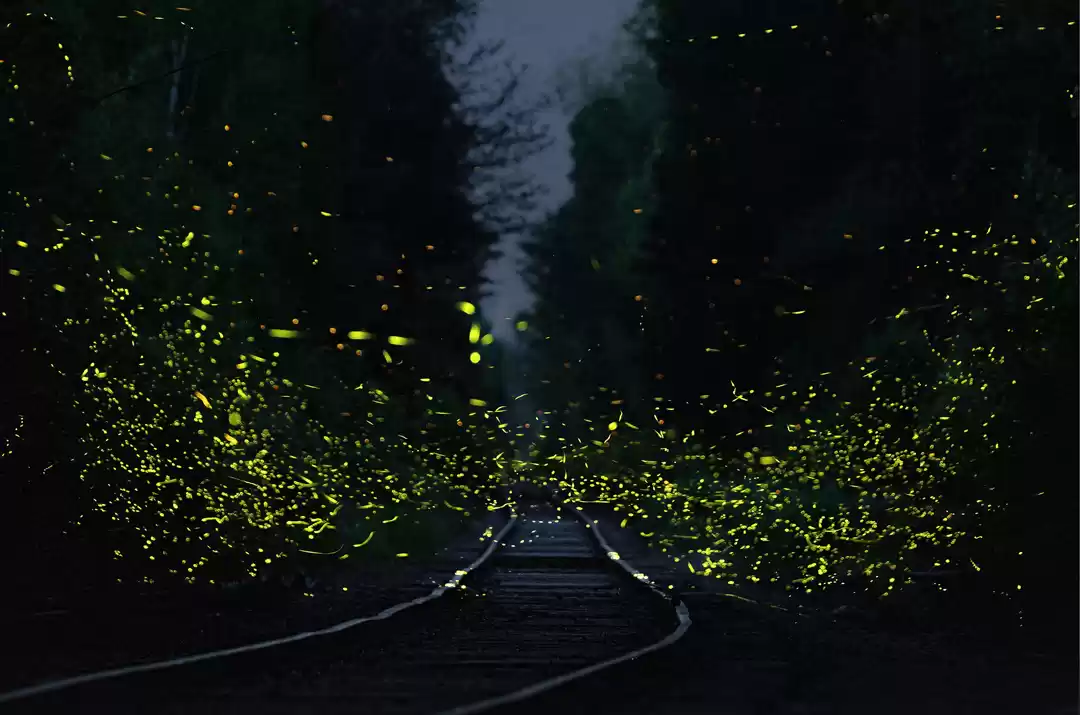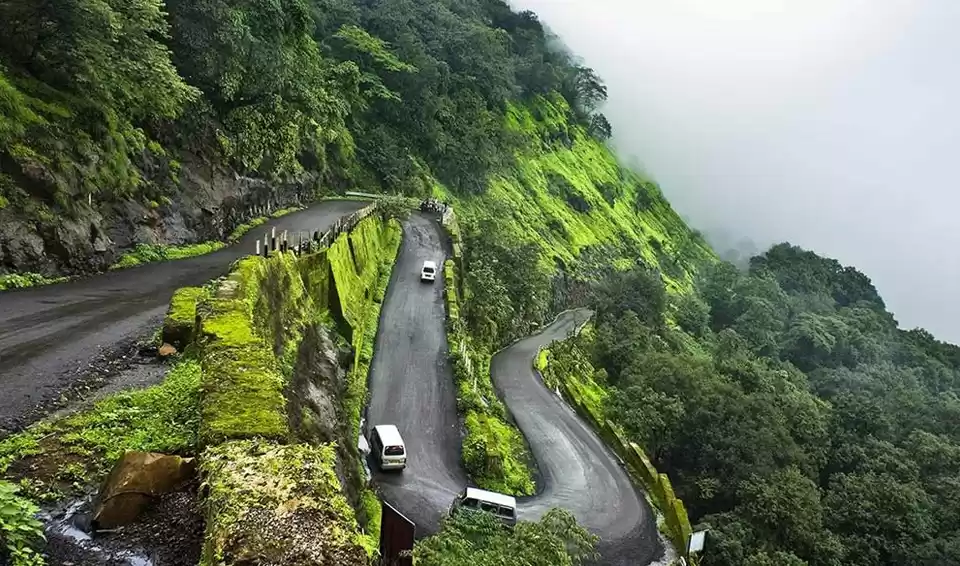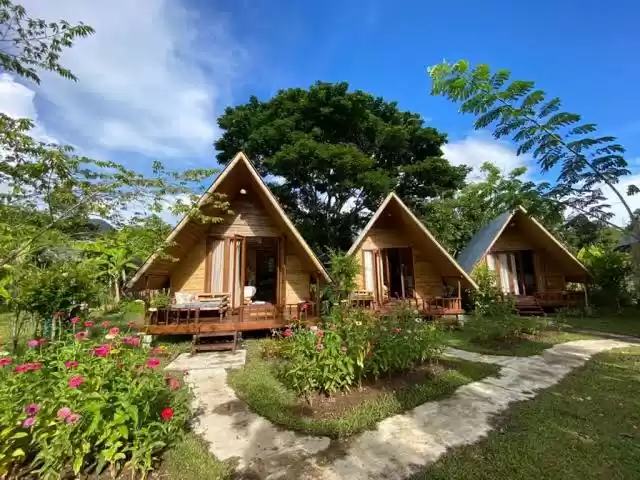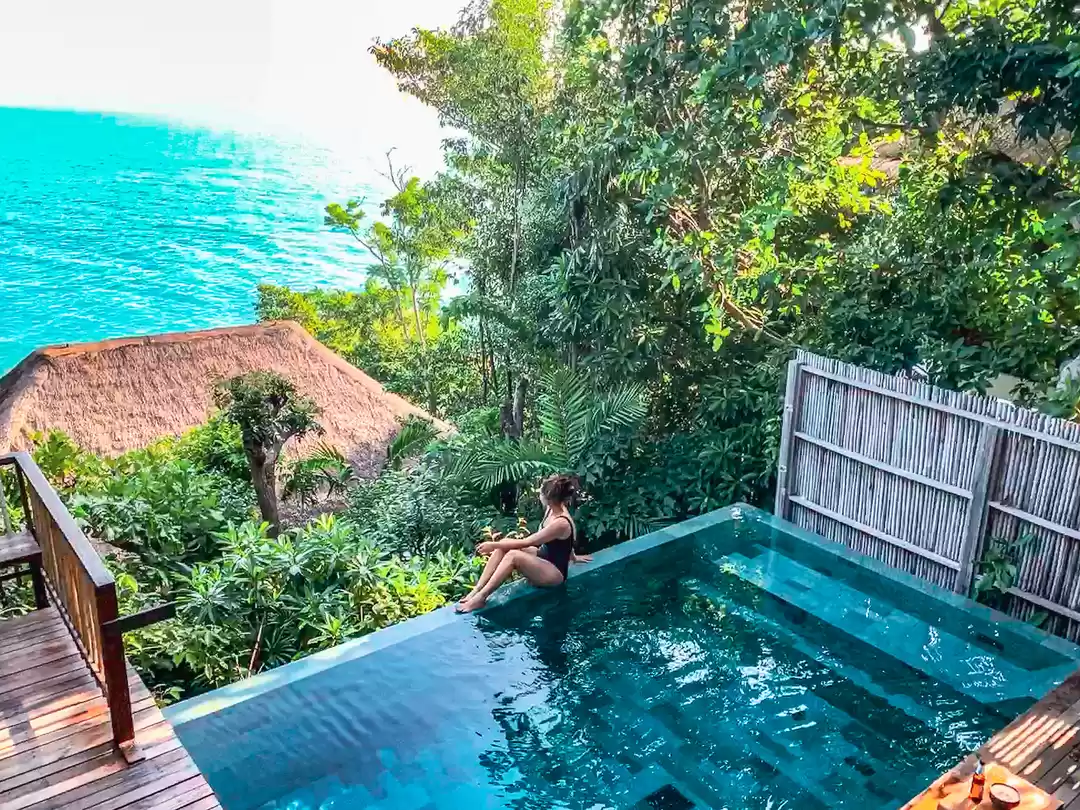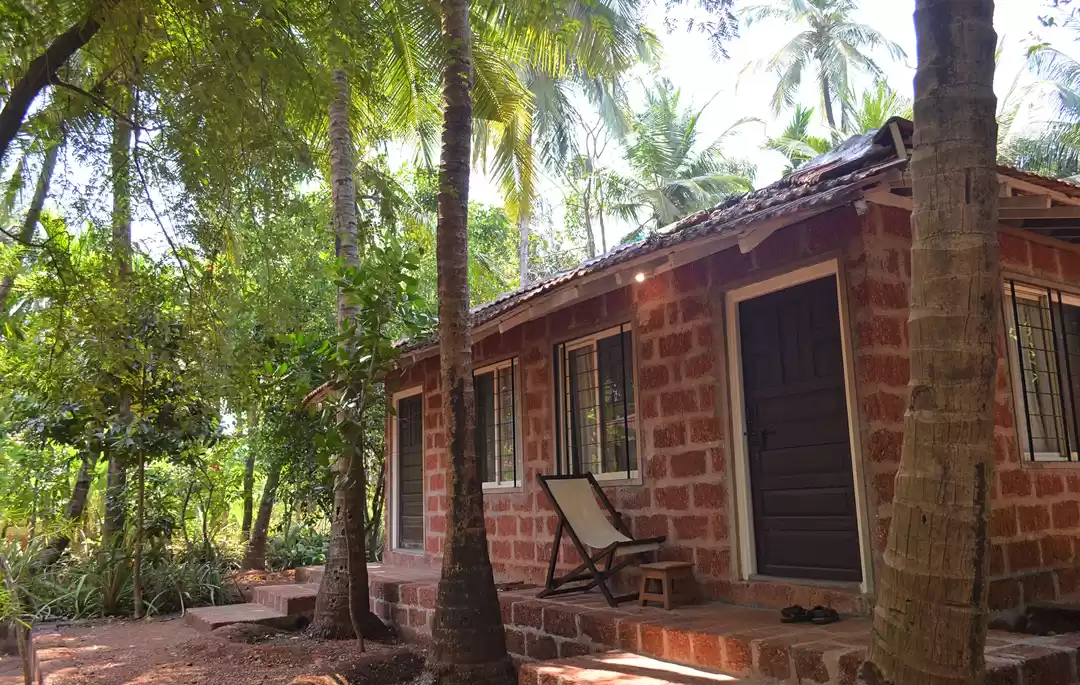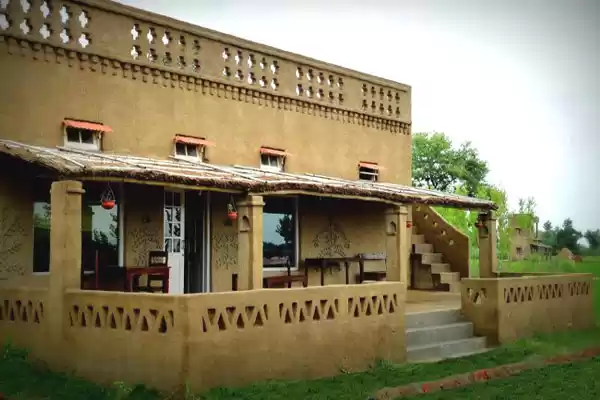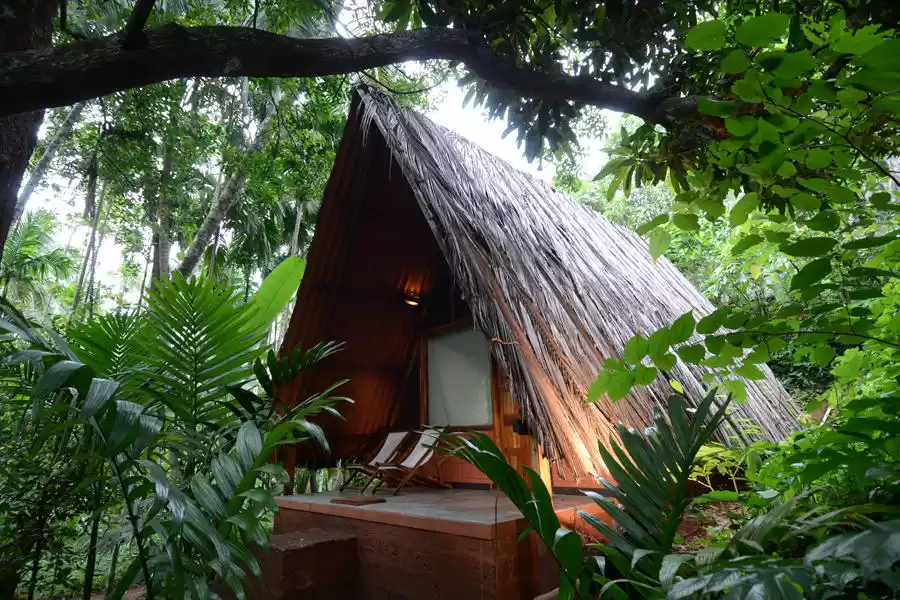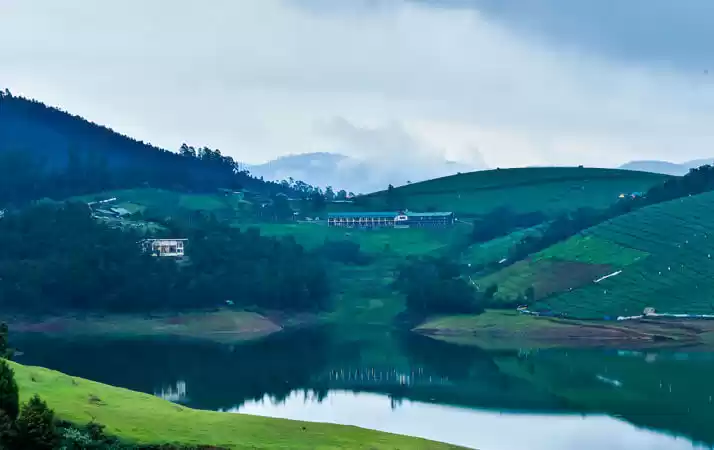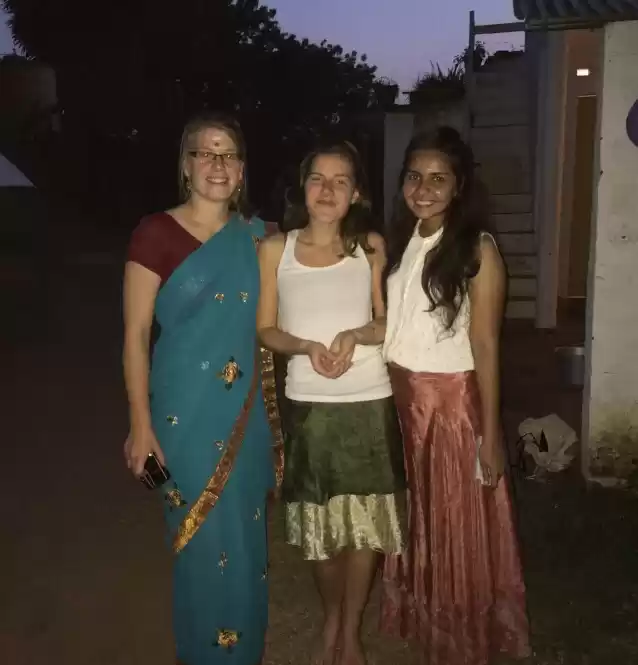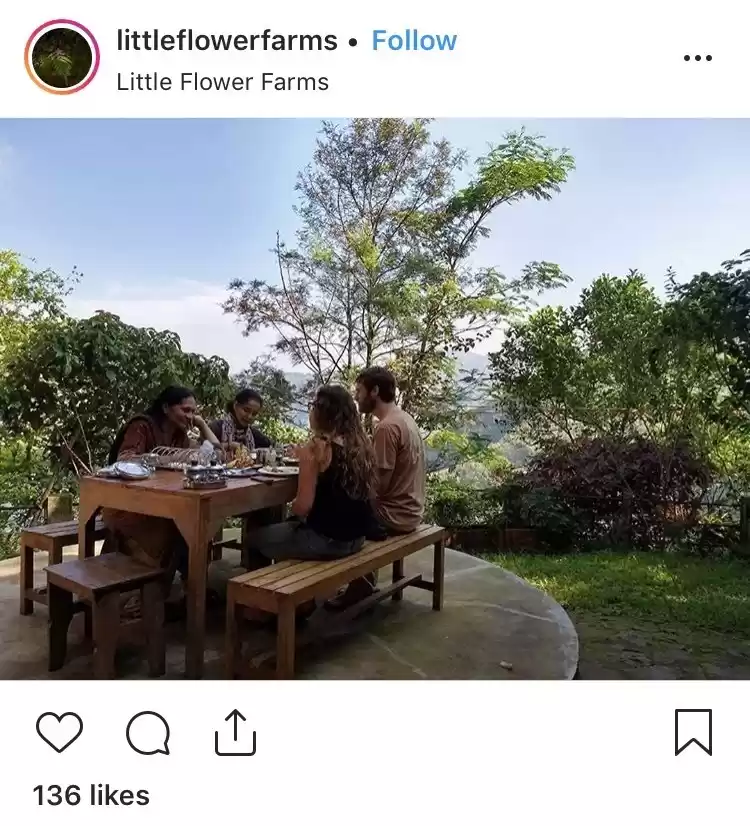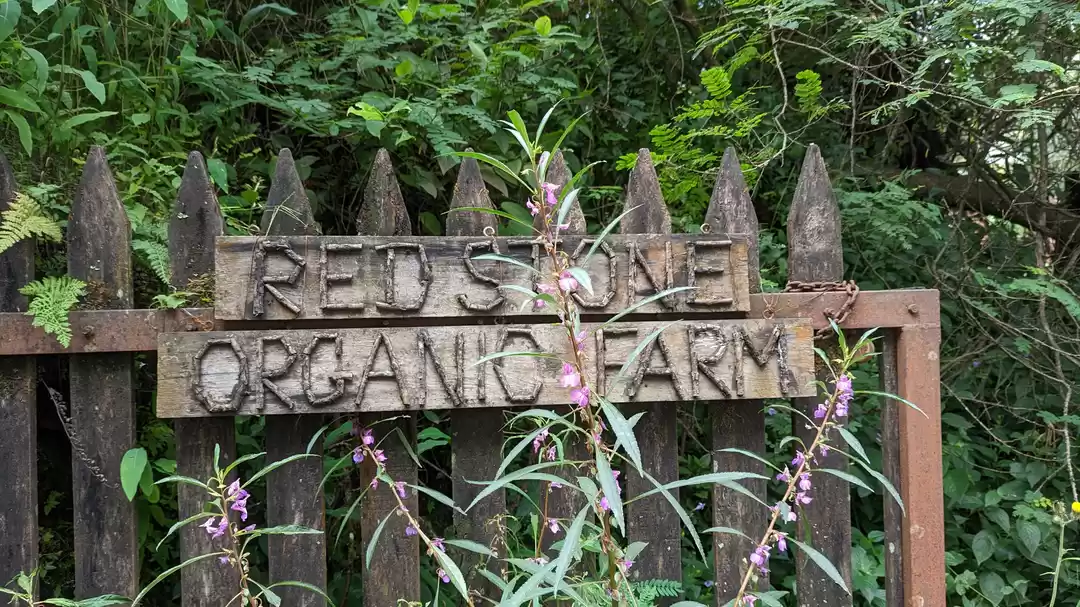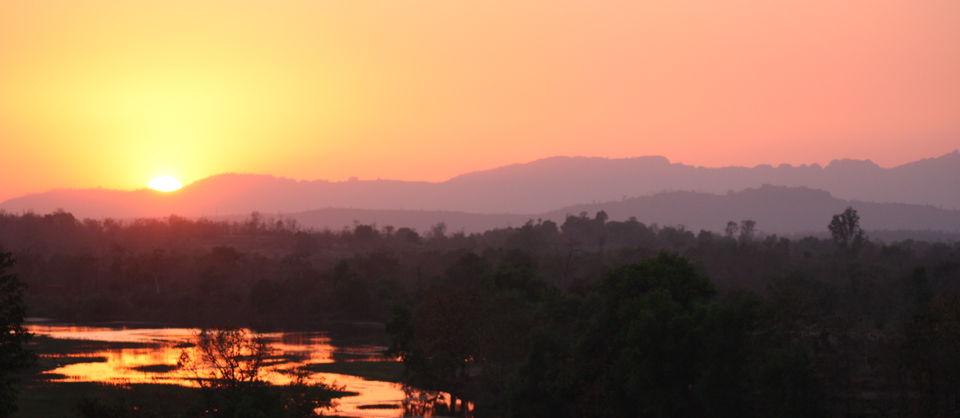
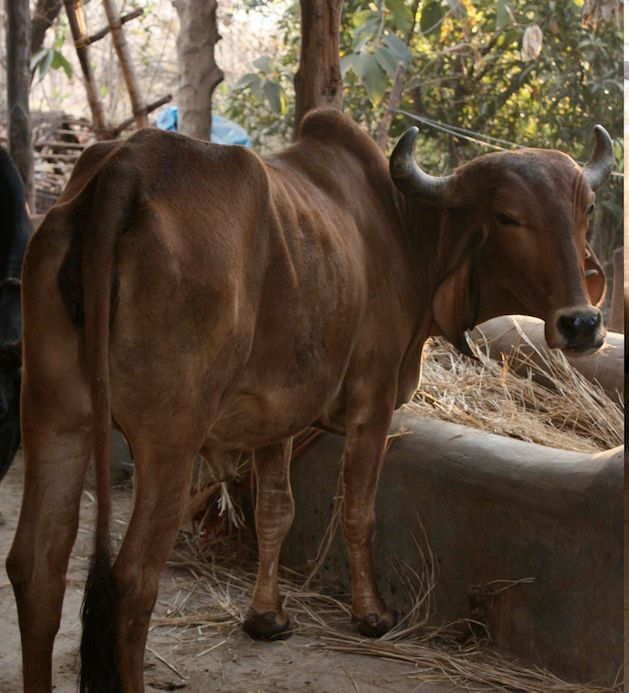
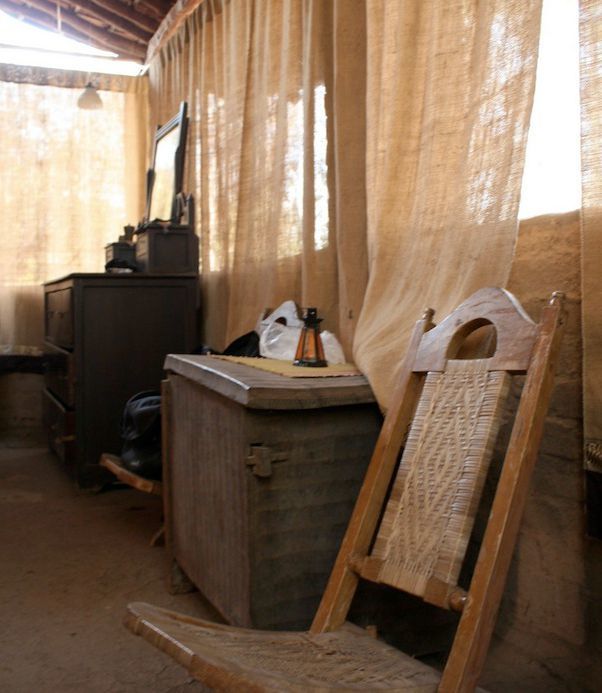
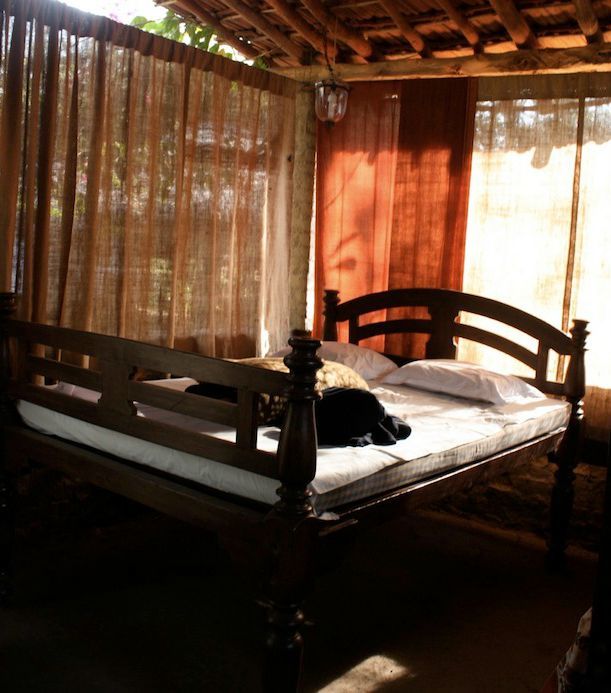
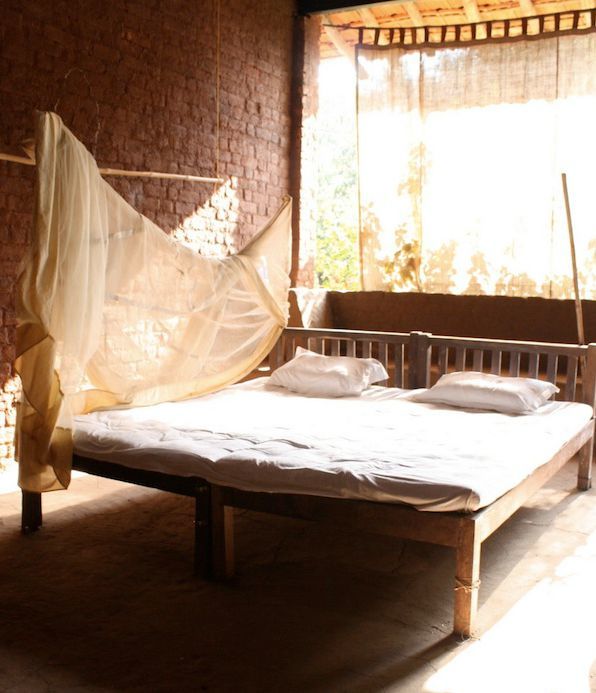
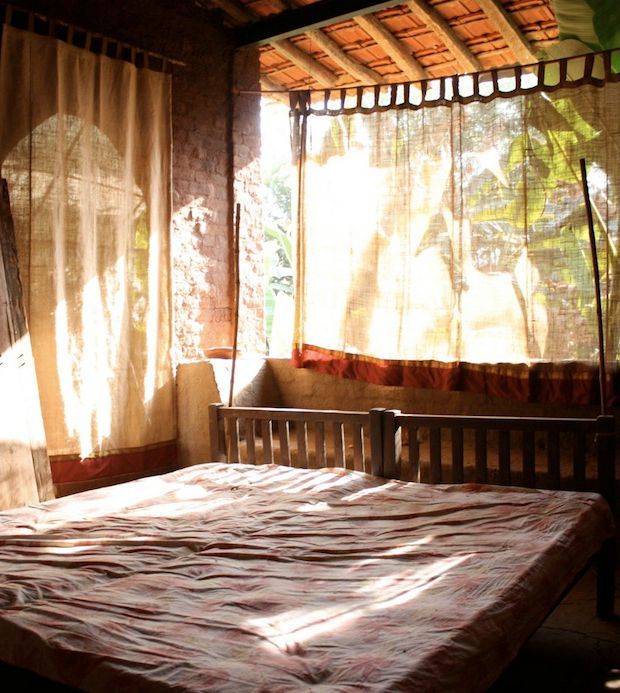
A farm 200 kms from Mumbai, built on land bought 23 years ago, in a tiny village that even State transport buses (at times) don’t pass by, that has more than 20 varieties of bananas and many other fruits, and two dogs and many more passing by! This is an experience that takes you back to the basics, and makes no pretensions about it.
Situated off the Mumbai-Ahmedabad highway, you enter through a mud path, leading to a circular open sit-out with chairs, a bed, a rocking chair and a rope-bamboo ladder. Walk a few steps and you are in the middle of the kitchen-dining-living room and then you are bang in the middle of the family, or rather you become family!
The hosts: Hemant, his wife Sangeeta and his mother do not let you settle into typical guest behaviour. You are drawn into arguments with maids, conversations between family members and even the cooking! This is a self-service, ‘do it on your own style’ farmstay in the midst of 5 acres of lovely land with two dogs, two cats and so much nature for company. There are few walls here (even in your rooms), and those that are there are made of mud. The living area comprises of an open kitchen, dining area and an assortment of chairs, hammocks and swings. The look and décor is earthy and teak leaves in the thatched roof, traditional cow-dung flooring (which is redone every year), antique furniture and lighting dot the place, collecting antiques being Hemant’s other hobby apart from his premier hobby for the last 23 years- his farm. So look out for furniture from Nepal, the North-east and pieces that are one of a kind in India. And if you have the money, they are all for sale!
The rooms are spacious, airy, earthy and clean. One can stay in the eco-room with large windows across all walls, with curtains for privacy. Or stay at the eco-cottage that comes with double bedrooms- one big bedroom with a smaller room attached. There are also bunk-beds in one of the cottages- a definite hit with the kids. The bathrooms are adequate and clean with modern amenities but do bring your own toiletries. The notable feature is the bath-towel rod- suspended from the wall above the tiles with two threads hangs a bamboo stick and your hand-towel rests on that! Expect to see flowers and frogs in your bathroom. The frogs might be watching you from some corner, but take a peek in the pot before you sit as they do love it in there! If you are feeling adventurous, then you can sleep in the open or on a swing and the cat might jump onto your bed for company. Hemant believes a cozy tent kills the idea of sleeping with nature so expect to sleep on a mattress covered with a suspended mosquito net under an open starry sky, crickets for company and morning chills – a recommended option. Temperatures are comfortable beginning March through the summer months. For the open-air campers, there are the two common bathrooms that are spacious and clean.
The food is made by the local tribal women: Vaishali and Namrata. It is Maharashtrian vegetarian home-food. Less oil is used, masala is minimal but extremely tasty. Interestingly, everything is cooked on the chulah. You can request your favourites and they are most happy to indulge, or just jump in and get your hands dirty. You will most definitely be asked to help with the salad. Breakfast is a wide range of fresh fruit from the farm and maybe a poha or upma. 5 pm snack is tea with Kurmura (puffed rice). The tea is made with fresh milk, so tastes different and needs getting used to. I never did.
Free time can be spent as you choose with no fixed itinerary. Spend it getting acquainted with the plants, the numerous fruit trees, maybe even plucking the papaya for your breakfast, or tomatoes, basil and rocket leaves for your salad. There is a small lake at the Sajan Dam, with a tiny waterfall – almost like a pipe – but serves for a good dip. Post that, one can take a walk around the nearby villages, meet some warli artists in their homes, buy their art, meet the local witch-craft man, or have some hot vada-pav and amazing dal wadis at the local market at Vikramgad. And take your camera along as you will come across some lovely people, places and moments. Or spend your time playing with the dogs. In Toughie, you will find the opposite of what his name promises – a soft-centred, brown dog who loves attention. In Bonzo, you will find that evergreen Dev Anand, someone who refuses to grow up – he is 5 years old, but is still a puppy, a total beggar for affection, love and your touch.
Hemant will go out of his way to inculcate you into his approach to life, and can be quite convincing at that. He does not use eco-friendliness as a tool to get people curious as they actually breathe it: from the materials used in building, segregation of waste, vermi-compost baskets for sonna mitti, organic farming to daily living. The land is neither pruned nor landscaped, it grows as is, and thrives. Do buy a plant, re-plant the seeds, then gift the new plant to family and friends – this is Hemant’s big idea with sharing ‘green’. A simple idea that could potentially change each of our lives and homes in a small but significant way.
When the time came to leave, I took four plants, two kilos of sonna mitti (vermi-compost soil), a bunch of ideas to munch over, two recipes to try, a wish to visit again and lots of memories!
Gritty details:
Driving: Mumbai is the closest city, but by road, it could be around 2-3 hours away depending on traffic. If you time your travel (leaving Bombay early morning) you could take a little more than 2 hours.
By bus: Catch a bus going to Jwahar or Dahanu from the Thane West Bus Depot. Once you are on the bus, buy a ticket for Vikramgarh and get down at Jhadpoli. If the bus doesn’t stop at Jhadpoli, continue to Vikramgarh and take a share-jeep ride back to Jhadpoli. Alternatively, take a bus from Thane to Wada. Hop onto a share-jeep or tuk-tuk there. All-in-all a 3.5 hour – 4.5 hours journey, depends on how lucky you are with the connectivity. The ride is a great way to meet locals, experience the raw heat and dust of India. Remember these are all State Transport buses and not luxury Volvos! Once at Jhadpoli, can the road that is marked Thapadpada – St. Joseph’s home for the aged, miss the first left and continue till the green gate. Look out for the sign 'Hemant and Sangeeta’s Farm' as one can miss it.
Getting around:
Having your own car is the best way to get around. Hide-out can organize for a car pick-up and drop from Bombay and Pune at an extra cost.
What to pack:
Toiletries and towels
A good mosquito repellent
Keep the shorts for the day and wear pyjamas at night, you are in middle of 5 acres of greenery
This trip was originally published on Merry to go around.


